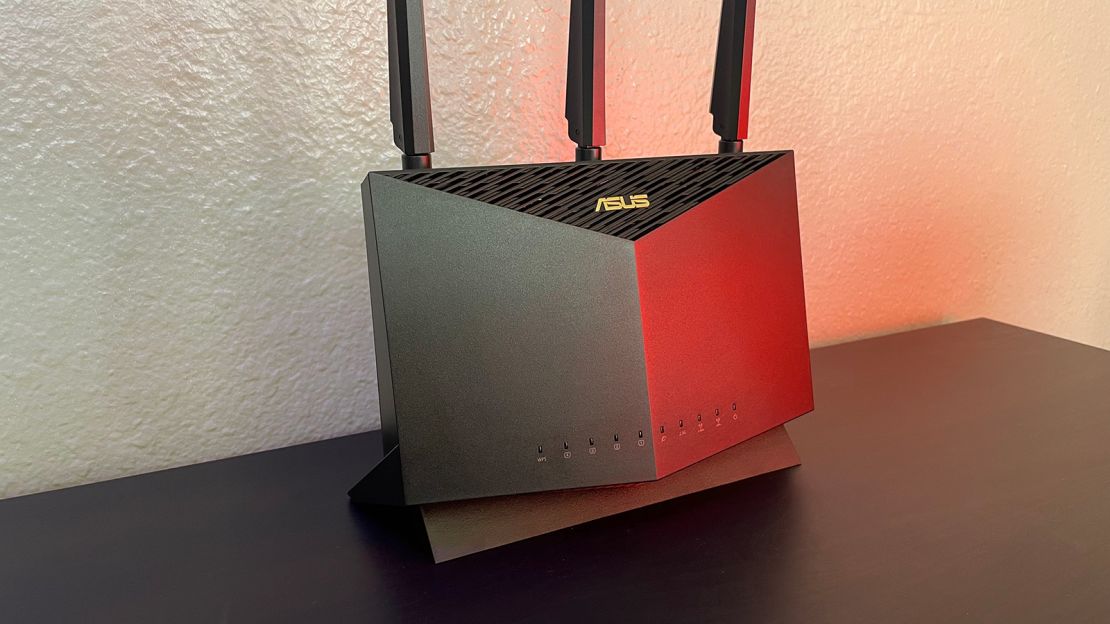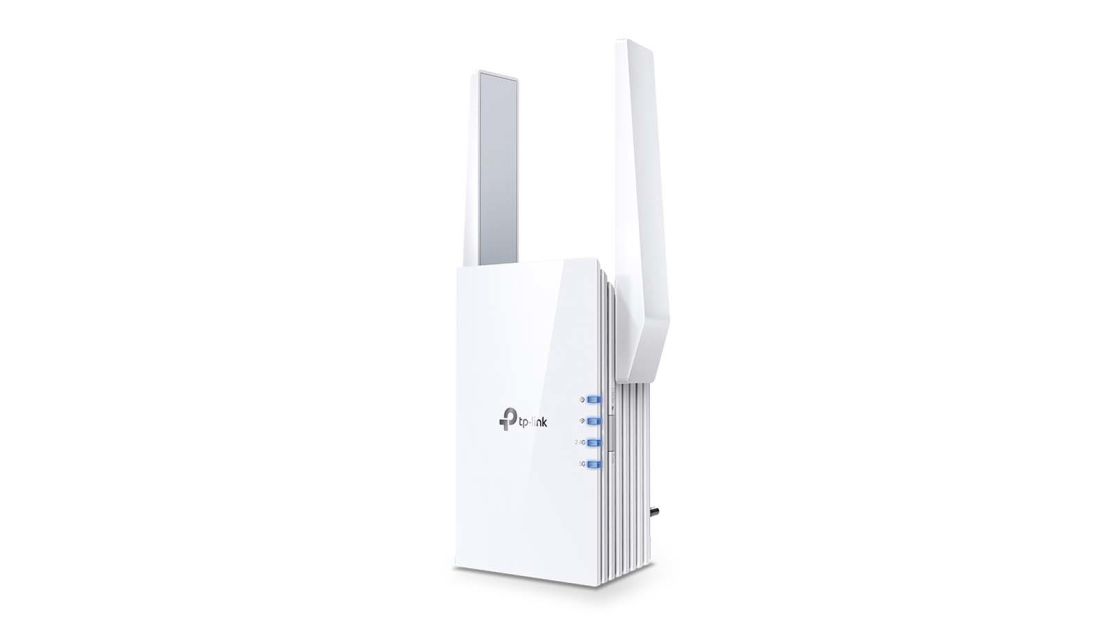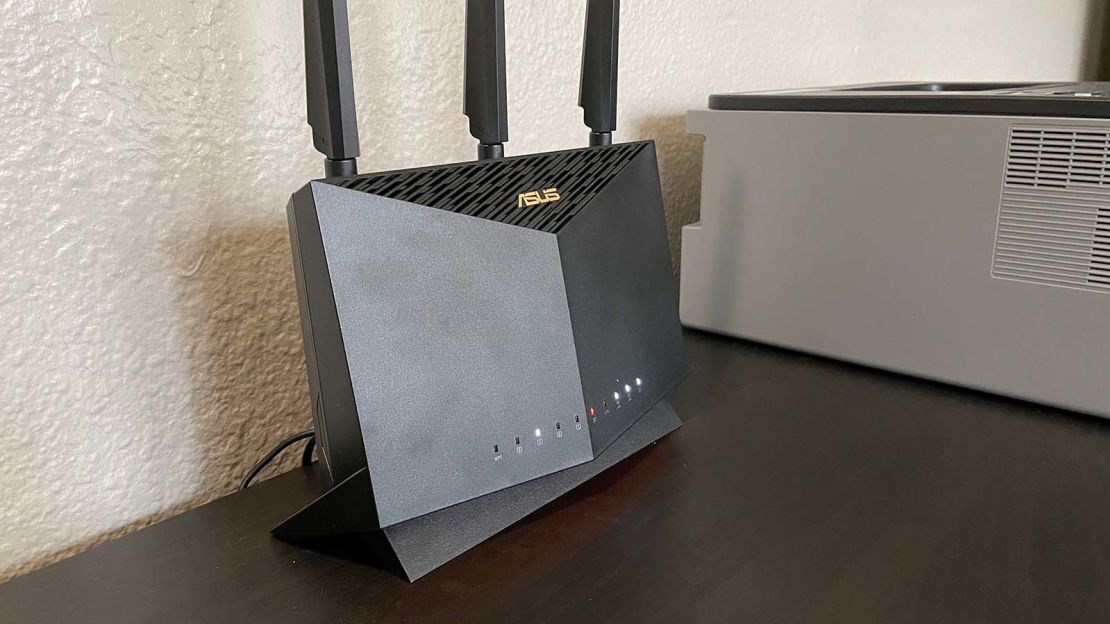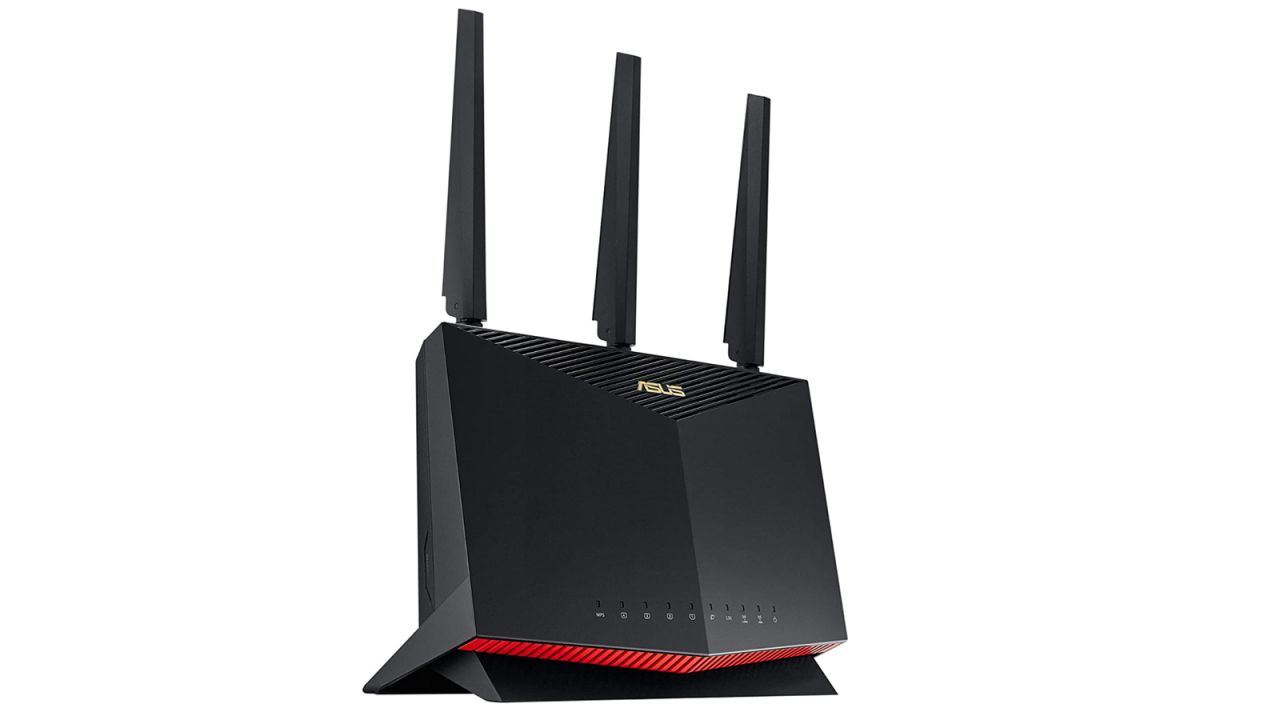These days, a fast and reliable Wi-Fi signal is akin to basic utilities like electricity, water or gas — an essential, whether you’re still working from home or just need an optimal experience for all your wireless devices. And though it may seem daunting, choosing the best products for your individual household’s needs is the best way to achieve your lofty yet necessary wireless goals.
We put dozens of wireless products to the test — from routers to Wi-Fi extenders — assessing everything from internet speeds to smart home connectivity. From that testing, we’ve compiled a guide to all the products you need to get the best Wi-Fi coverage in your home whatever your needs.
Best Wi-Fi router: Asus RT-AX86U
$279.99 at Amazon

The Asus RT-AX86U offers incredible performance in a relatively smaller footprint at a reasonable price. With some of the best speeds at the longest range on our hardest tests, it also handled multiple devices better than any other router we tested and includes advanced features like 2.5Gbps Ethernet, link aggregation, guest networks, Wi-Fi scheduling and an OpenVPN server. Specifically, it was an exceptional router for larger homes packed with devices, and even better if you have an internet plan above 200Mbps.
The RT-AX86U takes up less shelf space with its vertical design, and its browser-based configuration portal makes it easy to set up. It also prompts you to download the latest version of the router’s firmware, which is an important security feature. Plus, it doesn’t skimp on features, including guest networking on 2.4GHz and 5GHz; schedule-based parental controls for websites and applications; quality-of-service rules (QoS); a built-in traffic analyzing tool for games and apps; and an OpenVPN server so you can safely connect to your home network from outside. It also has two USB 3.2 Gen 1 ports (read: USB 3.0) for connecting external storage and support for the highly robust WPA3 encryption and DFS channels — which can help avoid interference from your neighbors’ 5GHz networks.
An extra 2.5Gbps Ethernet port sits alongside the typical Gigabit WAN and four Gigabit LAN ports, and while most people might never need that much speed, it’s a critical addition for those who already have access to gigabit-plus internet plans or desktop computers with 2.5Gbps ports — and also helps future-proof the router. It can be used as either a WAN port (to connect to your modem or network box) or LAN port (to connect to your Ethernet devices). One of the router’s Gigabit LAN ports is a “gaming port,” and the RT-AX86U can prioritize traffic from whatever device is plugged into it.
? Read more from our testing of Wi-Fi routers here.
Best Wi-Fi extender: TP-Link RE605X
Starting at $109 at Amazon

A speedy Wi-Fi 6 extender, TP-Link RE605X worked without fuss or software bloat, giving us consistent, high performance across 90% of our benchmarks. In fact, no other extender we tested could keep up with its overall real-world performance.
As our top choice for longest range, the RE605X gave us the best wireless signal of all the extenders we tested and offered no doubts on its overall performance. All the other Wi-Fi extenders we tested struggled, usually when there were lots of walls and furniture between them and our test laptop. But TP-Link’s RE605X performed just as well on this as our easier, almost-line-of-sight test.
We also appreciated the ease of the RE605X’s setup, thanks to the built-in wizard. As part of the setup process, TP-Link also gave us an idea of where to place the device for best performance, shining a red LED light if the signal from your router is too weak, which prompts you to position it closer. Power users also get bonus features like a schedule mode to automatically power the extender’s Wi-Fi networks on and off, an option to manually shorten the extender’s range to avoid interference, access controls to permit or deny specific devices to access the extender’s wireless networks and a simple (but not automatic) firmware update to get the latest fixes and security updates.
For its roughly $100 price, you won’t find a better, easier-to-use wireless extender than TP-Link’s RE605X.
? Read more from our testing of Wi-Fi extenders here.
Best Wi-Fi mesh router: Eero 6 and 2 extenders
$199 at Amazon

A great choice for even a tech-challenged user, the Eero 6 blankets wide spaces with unfaltering coverage. Its conducive companion app features helpful prompts and a support page with accessible photos, which then helps you to properly place the individual nodes (you can opt for two extenders or two routers), and scores your placement — making it easy for anyone to expand their Wi-Fi coverage.
We tested the three-pack Eero, which includes the main router and two nodes, also known as extenders. With more than 100 devices on the network (from smart bulbs to TVs, laptops to connected appliances), the Eero 6 never once so much as sputtered during our testing, nor did we notice any dead spots. While the main router alone has enough juice to cover 1,500 square feet, pairing it with the two extenders covers a huge radius of 5,000 square feet. Whether it was in a 1,050-square-foot apartment or a three-story, 2,000-square-foot home, the Eero outperformed the other mesh routers in our pool. It also happened to be the only setup that expanded coverage in the home, giving us Wi-Fi in the garage, backyard and front yard.
The Eero 6 boasts dual-band coverage, which is kind of like a highway: Instead of all your devices sitting in traffic on a single-lane road leading to slowdowns, dual-band expands to two lanes, allowing for devices to switch to the faster lane. If you opt to turn on “Band Steering” in the Eero app, the mesh system will monitor your connected devices and intelligently switch them between the bands.
Since Eero is owned by Amazon, you can turn on Amazon Connected Home features, which allow for easy setup of devices like Echo smart speakers or displays, Fire TV streamers and Kindles. With a Zigbee antenna inside — a connection standard for smart home devices like smart plugs, cams and sensors — the Eero 6 can also act as your home’s smart home hub, with easy integration with Alexa and Echo devices.
Priced at $129.99 for one or $279 for a three-pack, the Eero 6 is an investment but one that will last for several years, thanks to its support of the latest standards.
? Read more from our testing of mesh Wi-Fi routers here.
Best gaming router: Asus RT-AX86U
$279.99 at Amazon

Our pick for the best overall Wi-Fi router, the Asus RT-AX86U also wowed us with its ability to handle multiple bandwidth-hungry devices at once with less fuss and need for manual configuration.
In our preliminary long-range testing, the RT-AX86U’s 5GHz performance put it in third place among its competition of seven gaming routers. But when we placed them in a central location in a 2,100-square-foot test house, as you should at home, the RT-AX86U picked up the pace.
Next, we upgraded to our multi-device test, setting up each router in the living room of a two-story, 1,100-square-foot townhouse in a crowded neighborhood, simultaneously slamming them with two 4K video streams, a large file transfer, a point-to-point throughput test between two Wi-Fi 6 smartphones, an internet speed test and a game of World of Warcraft. We ran each test with the gaming features off, then again with them enabled. For tri-band routers, we tested each 5GHz band separately, with and without gaming features, and then once with the World of Warcraft computer connected to one 5GHz radio and everything else on the other one.
Here, the RT-AX86U beat both tri-band TP-Link routers across the board, with much faster internet download speeds and lower latency, faster device-to-device throughput and usually lower game latency. Most importantly, the RT-AX86U was consistent. On the tri-band routers, we got vastly different results depending on which devices connected to which band, which is a configuration headache that most people at home simply won’t have the patience for. The Asus router only has one 5GHz network, but it was good every single time.
? Read more from our testing of gaming routers here.
FAQ
How do I choose the right Wi-Fi router?
Shopping for a new router in 2022? It makes sense to get one with Wi-Fi 6, which is faster and more secure, and it can support more devices than Wi-Fi 5 (802.11ac). Not only do most new phones, tablets and laptops come with Wi-Fi 6, but older devices will work fine with it as well. Be advised: Wi-Fi 6E, on the other hand, is still too new and too expensive, and there are almost no devices yet that can take advantage of its tech. Better to wait on those before paying the premium.
Before you choose a new product, you should make sure you’re getting the most from what you already have. If you haven’t already, move your router as close to the center of your living space as possible so you’re getting even coverage throughout your home. If you’re still having issues, you can test your router’s signal strength, throughput and latency using a mobile device. We like to use the free WiFiman app, available for iOS and Android. This can let you pin down any areas in your home where you have poor coverage.
If you’re generally happy with your Wi-Fi but still find a few trouble spots, a Wi-Fi extender is a good fix. If there are multiple rooms that need a better signal, a new router can help, but for large (above 2,500 to 3,000 square feet) or complex spaces, you should consider a mesh Wi-Fi system like Eero, Netgear Orbi or Google Wi-Fi.
If you do get a new router, make sure to test its performance throughout your house as soon as you get it so you can return it if necessary.
Don’t shop by feature unless you’re a power user with specific needs. But do make sure your new router includes basic things like automatic firmware updates, guest networks, an “access point mode” for extending your router’s usefulness, support for DFS channels and WPA3 encryption.
When it comes to security, we suggest resisting the temptation to use extra features that could send your router’s data to a third-party company like the Trend Micro services supplied with Asus routers’ AiProtection. Our advice? Stick to the basics. Nor should you link your router to Amazon’s Alexa or use cloud-based services like Trend Micro’s AiCloud to connect to your router from afar or remote control apps like TP-Link’s Tether.
Do I need a gaming router?
Wireless routers marketed for gaming usually stand out with garish designs and come packed with gaming-specific features like the ability to prioritize traffic from specific devices or settings meant to improve response time in multiplayer games. But in our testing we found that these features are mostly just renamed features that aren’t unique to gaming routers and didn’t make a significant difference in latency.
What did make a difference? A strong, fast Wi-Fi signal and the ability to juggle everything you can throw at it. If you’re really concerned about in-game performance you should connect by Ethernet anyway. So, our take? You don’t need a gaming router; you need a good router — and we suggest our top pick for the best overall router
What is a Wi-Fi extender?
A Wi-Fi extender is the smallest, least complicated solution when looking to speed up, or beef up,?your Internet signal — especially if you have a single area in your home that is poorly served. It’s also easier to set up and deal with, and usually the least expensive option.
A great Wi-Fi extender can also function as a wired access point — you physically connect it to your primary router with Ethernet cable to get the fastest potential speeds for devices connected to your extended wireless network. This will always be the best option for performance instead of using a wireless connection as the “backhaul,” as it’s known, but not every extender supports this kind of a setup.
Extenders come in all shapes and sizes, differentiated by descriptive numbers like “AC1200,” “Wi-Fi 6” or “802.11ax” that indicate a device’s potential speed. Based on the Wi-Fi technologies, protocols and extender supports, you may think you’re getting a better product, but the numbers you see on the box don’t tell the whole story. Even Wi-Fi extenders with identical specs can have wildly different performance, which is why our long-term testing will help you sort through the many choices.
All the Wi-Fi extenders we’re looking at can latch onto your existing Wi-Fi setup and extend a new Wi-Fi “bubble” from wherever you place them. Once you choose, it’s also important to install it and test it out to make sure you’re getting the best combination of coverage and speed. All homes and apartments have their quirks, and what works well for one layout might differ (for better or worse) in your specific setup.
What is a mesh Wi-Fi system?
If you live in a very large home or have a significant number of smart home devices, you may need more coverage than a single router can deliver.
And these days, your best bet to ensure optimal performance in such spaces is a mesh Wi-Fi system, which uses multiple smaller routers that communicate with one another wirelessly while appearing to your devices as a single network.
Some mesh wireless systems use a combination of base and satellite units, others use identical small routers and there are even some stand-alone routers that let you add satellites after the fact. Either way, they communicate with one another on a separate Wi-Fi backhaul channel and give you seamless Wi-Fi around your house or apartment. The key is to configure them correctly and set them up in the right spots to get around obstacles. Then, your devices can hopscotch among the units placed throughout your home to effectively eliminate dead zones and improve wireless internet speeds.
If that’s not enough, you can also find systems that give you the option of connecting network access points with Ethernet cables, instead of a wireless signal, which gives you even better performance at the cost of having to run cabling throughout your home























